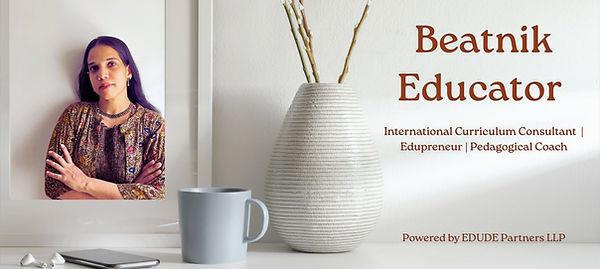IB MYP Integrated Humanities Assessments: Preparing, Planning and Acing
- Pallavi Sharma
- Oct 30
- 2 min read

In 2016, I embarked on my journey in IB MYP when a newly authorized school recruited me to develop their Individuals and Societies curriculum. This period marked the school's transition from IGCSE to MYP. The teachers and the humanities department were both sceptical and excited. I saw this as an exhilarating challenge to embrace. Over the next few years, we engaged in continuous iteration, ideation, and brainstorming to craft a learner-centric, inquiry-driven, concept-based, and contextually relevant curriculum.
It was when I became an Integrated Humanities examiner and prepared my first batch for the MYP EAssessment that I truly mastered the art of mentoring students and teachers in Integrated Humanities. Here, I will share some invaluable tips and tricks that greatly benefited me, my students, and my team of teachers:
Cover 75% of the topics/themes in MYP 3 and 4: Thoroughly covering at least 75% of the topics in MYP 3 and 4 is essential for a strong foundation, especially for students joining MYP 5. This allows more time for personalised guidance in MYP 5, where teachers are constrained by personal projects and E-portfolio demands. Aim to balance coverage without rushing or lingering excessively. Integrate topics where possible; for example, combining Sustainability themes in one unit reduces load while maintaining the central concept.
Guide students on each criterion with precision: Previously, I overwhelmed students with too many criteria. Now, I focus on one criterion at a time, helping students master each before combining them, reducing pressure and clarifying expectations.
Design assessment tasks and rubrics to align with E-Assessments: Avoid designing assessments as you understand them; instead, tailor them for middle schoolers. Study past E-Assessments and mimic their rubrics, using simple language. Avoid vagueness by quantifying criteria. For example, specify how many academic terminologies constitute a 'limited' or 'extensive' use to help students demonstrate Knowledge and Understanding effectively.
Get students to play the role of examiners: Have students mark sample responses to help them view tasks objectively. This exercise clarifies expectations, including word limits, and guides students on what and how much to write.
There are multiple methods to tackle assessments in the MYP. If you have a tip or trick that has been beneficial to you, feel free to share it with the community here.
If you're a teacher or parent of an IB MYP student and want to discuss or gain a deeper understanding of the Integrated Humanities assessment criteria, please contact p.shr.rajaratnam@gmail.com
_edited.jpg)




Comments